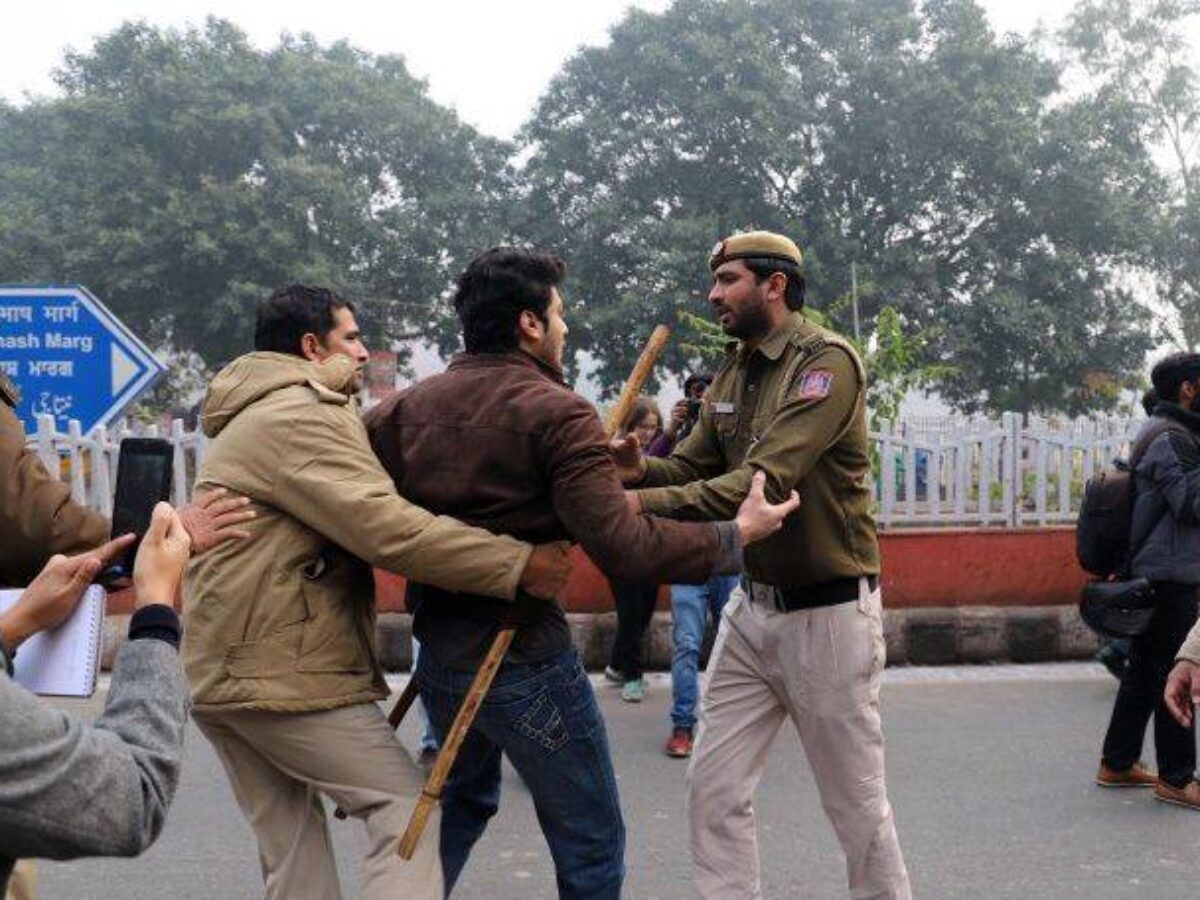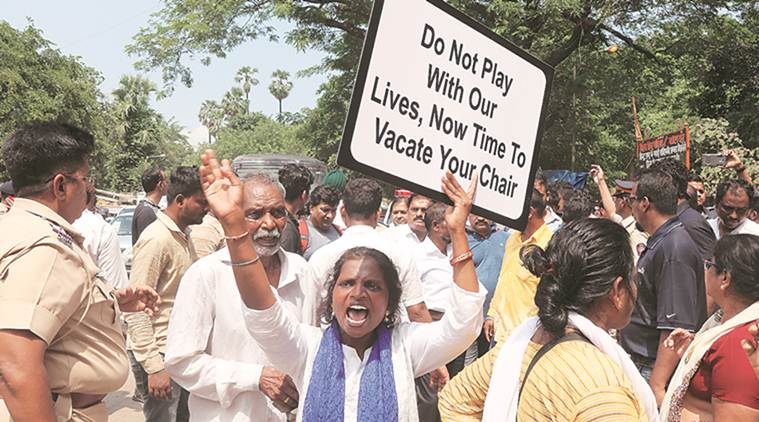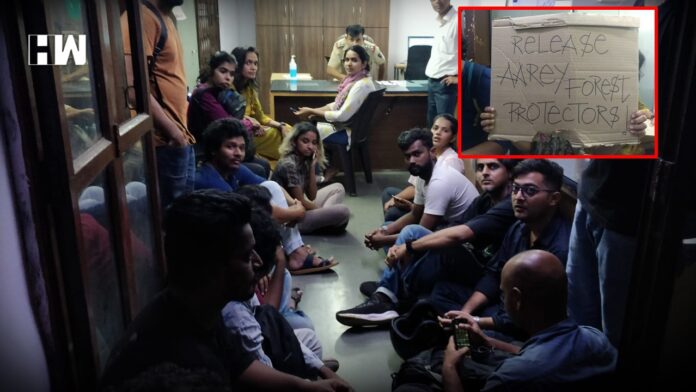The saga behind the Aarey protests:
The felling of trees in the Aarey colony caused a great uprising across the nation. The felling of trees was a result of the government’s decision to cut the vegetation in the area for making way the city’s metro project. As per the proposal, the Mumbai Metro Rail Corporation Limited has purported to construct a parking area at the place where stood the green cover of the Aarey colony. As per MMRCL, this area has been acquired for their ongoing project of Mumbai Metro 3.
Under the umbrella plan of this project, a 33.5 kilo-meter SEEPZ line is being built which is also known as the aqua line of the Colaba-Bandra line. The plan is to build the first underground railway line in Mumbai. This railway lines will heavily be depended upon the already in place over the ground local train system. The view was to reduce the burden on the western railway line, which has been recognised as one of the busiest spaces filled with corporate offices.

Post the felling of trees it was reported in newspapers across the world that Arey is the land of the tribal who have occupies the area for generations now. It is a popular picnic spot for the residents of Mumbai and has been left untouched by any of the nearby constructions as it is known to be the ‘lungs of the city’.
It is full of blooming livelihood and economy as it has one of the biggest cowsheds providing milk to locally situate and government run dairies in the city. A NGO called Vanshakti has been fighting over declaring the Aarey colony as ‘forest’. However, they could not attain what they intended. If it indeed was labelled as a ‘forest’ then the unfortunate incident in the name of ‘development’ would’ve never occurred.
The Bombay High Court refused to stay the orders:
In the previous litigation on this matter, many activists had come together demanding declaring the area as ‘forest’ for its protection and conservation. BMC’s tree authority had granted permission for the felling of over 2000 trees which was being challenged before the Bombay High Court via a PIL by one activist Zoru Bathena. Advocate Janak Dwarkadas, appearing on the behalf of Bathena had contended that the decision of the tree authorities is a clear case of “non-application of mind” and in violation of provisions laid down under the Trees Act, taken in “haste”.

On October 4, 2019 the Bombay High Court had refused to declare the colony as a forest area. The petition was filed to quash the BMC’s authorization for felling of the trees. However, despite a decision in the favour felling the trees, the Chief Justice of Maharashtra High Court Justice Nandrajog orally remarked that the petitioners should be given the opportunity to approach the Supreme Court before the BMC goes ahead with felling of the trees. But the MMCRL went in complete contravention and began with the felling of trees that very evening.
Since the uprising began, it hasn’t been ascertained as to how many trees have fell by the actions of the MMRCL. As per the plan, MMRCL had the permission to cut 2,646 trees. There has been floating speculation to say that from 500-1000 trees have fallen in total. However, the problem arises as there is speculation that even the trees which have not been numbered have been cut down. The felling of the unnumbered trees becomes crucial as MMRCL has been promising to replace the trees, but if they cut unnumbered trees then the estimation will surely be under-valued.
The spark of protest and the aftermath:
Considering the unique and peculiar nature of the Aarey colony, the felling of trees was met with massive unrest across the country by many environmentalists. The protesters in Mumbai were detained by the police authorities in light of the ongoing protest. As many as 29 protesters were arrested and subsequently sent to judicial custody for five days by a local magistrate. Section 144 was declared in the area, declaring the assembly to be unlawful.
A group of law students sough immediate intervention by the Supreme Court by writing to the Chief Justice of India Rajan Gogoi. In their letter, students made it clear that they were forced to approach the Supreme Court as on an earlier occasion, the Bombay high court had rejected an application moved by environmentalists seeking a stay on the cutting of trees. In lieu of ongoing holidays in the country, a special vacation bench was constituted by the Supreme Court.
On October 7, 2019 it ordered a stay against felling of the trees until October 21, 2019, post Durga Puja holidays. The Supreme Court is set to hear a plea against the decision of the government to cut trees in the name of ‘urbanisation’ and ‘urban development’. Moreover, the Supreme Court also ordered for release of activists held for protesting against the felling since the evening of October 04.
Politicization of the cause:
The situation further complicates itself with the Maharashtra Assembly Elections due in late October. Shiv Sena who has absolute control over the BMC has sided with the environmentalist and called the verdict of the Supreme Court to be a victory for the nation. It has in text ridiculed BJP-led government for ‘tearing apart’ or ‘murder’ of the trees.

Account of the protesters:
The 29 people who were arrested, detained and now released during the protests at Aarey colony against the action of MMRCL have alleged that in detention they were assaulted and misbehaved by the police personnel. All the 29 detainees collected at the Mumbai Press Club to share the narrative of what transpired at the night of felling of trees at the Aarey. A resident of the colony talks about her involvement in the agitation against the destruction of the Aarey region in the name of ‘development’. As soon as news came that the MMRCL authorities have arrived Aarey, they started to look for ways to stip this.
She doesn’t see the destruction of the trees along but rather one which is impacting innumerable wild animals, birds and tribal lives which were depended on those trees. In the name of a ‘metro project’ we are killing the most-important in our ecosystem. Pramila also alleged that she was misbehaved by the police, shoved down to the ground despite no unruly behaviour from her side.
She says that she was sitting in one corner signing the songs or protest, when she was surrounded from all sides and arrest absolutely unprovoked. There was no provision for separate women police officers for detaining the women protestors, it were the male police men who touched them and pushed them forcefully in the police van.

The detainees came from all walks of life, while few were local residents, others were students, professionals, teachers, land right activists, researchers, law graduates, environmentalists, etc. The manner in which the arrest took place had absolutely no line of discriminate between who was a ‘rioter’ and who was a ‘peaceful protester’. Concerned residents and environmental activists were treated as hardened criminals, while they were only showing their dissent against environmental destruction.
It can be seen that this was pre-planned, the wishes of the citizens at large have been ignored by the concerned authorities since the very first day. The proposal granting permission to MMRCL is 900 pages long and still has absolutely no mention of the objections raised by the citizen during the two public hearings held last year.
All the detainees including five women have their stories of assault and abuses by the male and female police. One of the detainees, Shruti, who is a city-based entrepreneur has alleged abuse by the deputy commissioner of police (Zone XII) D.S. Swami. She has visible bruises on her cheek as signs of attack. She also witnessed other women protesters being harassed by the police, pushed back, shoved ruthlessly and pulled in the van.
Apart from the bigger picture concerning the environment, the protesters have also demanded an independent inquiry to be conducted against the police excesses as they allege. The protesters have come on record to testify that around 150 protesters were detained by the official records only show 29 as these were the number of people arrested. This action of the police gave out a clear message that anyone raising their voice against the government will be stifled in one manner or another. The 29 protesters arrested were booked under the India Penal Code [IPC], majorly for the offence of obstructing public servants from discharging their duty under Section 353.

The protest against the Aarey felling of trees had massive support from people across the nation. The residents of Mumbai travelled from long and far to collect outside the tree felling site opposing the state decision. After forceful land acquisitions in the bullet train project and skiing of the required environmental clearance, this is another show of utter disregard by the government towards the environment.
By the time, the judgement of the Supreme Court order of stay had come, a lot had already been destroyed. However, even then the intervention is seen as crucial for the preservation of the Aarey area. Amrita Bhattacharjee, one of the petitioners and activists who has been at the forefront of this protest for the last four years said, “While a lot has been destroyed, the Supreme Court’s intervention still is crucial at this point. One, this area can still be preserved.
Second, our other pending petitions before the Supreme Court which haven’t come for a hearing for a long time will be looked into with priority. Aarey is no more a local agitation. It has taken shape of a national movement now and we are only hoping that the Supreme Court looks into all issues closely.”

